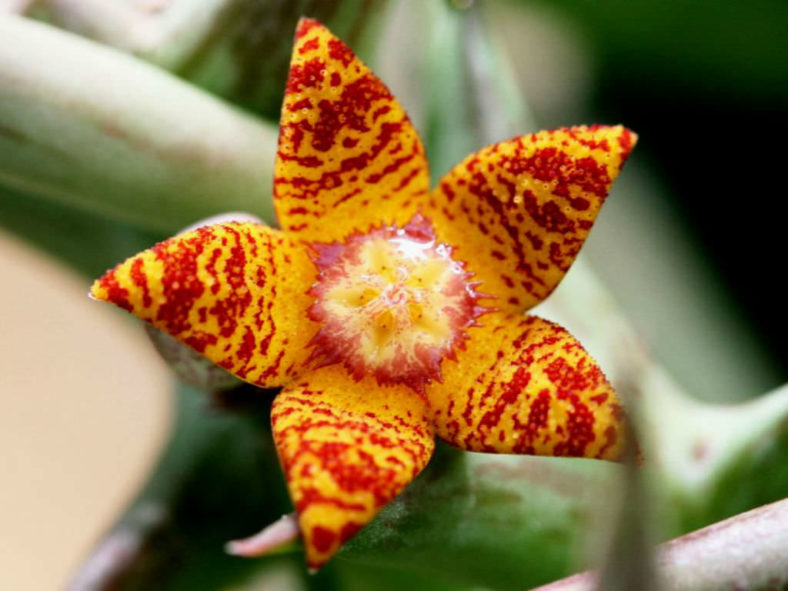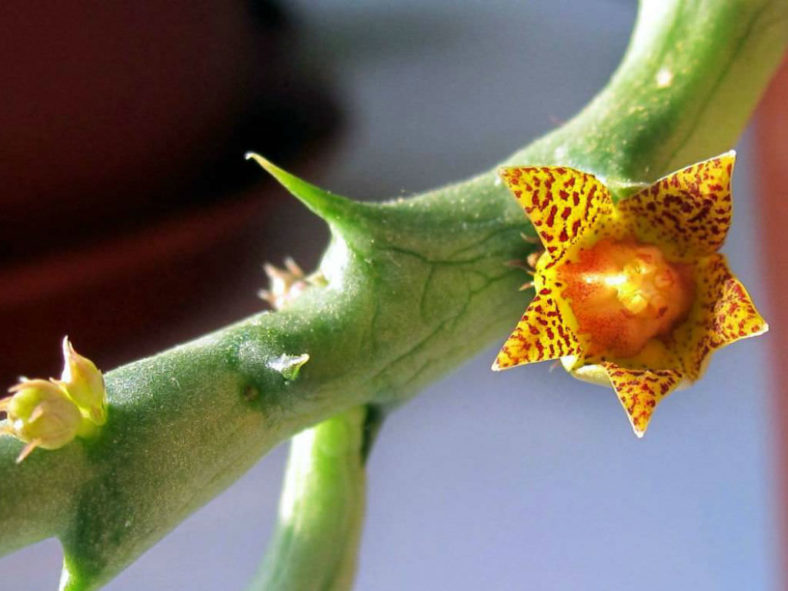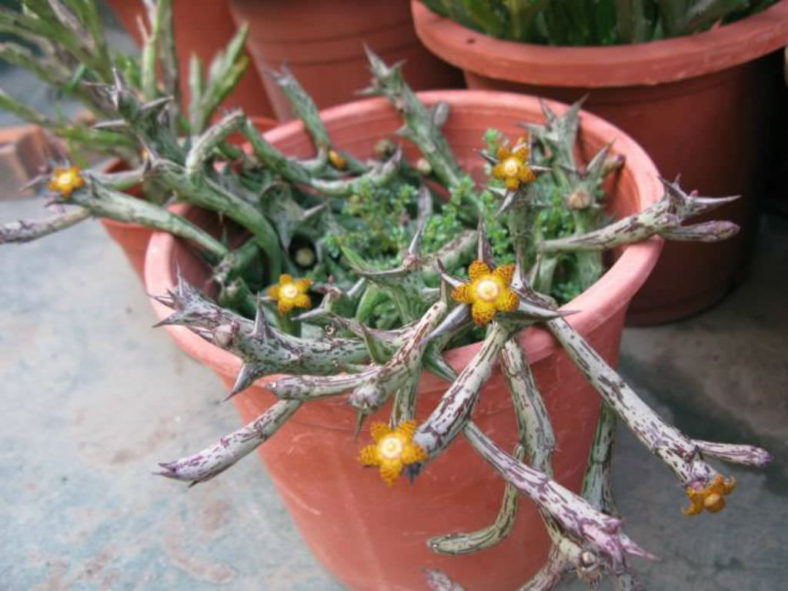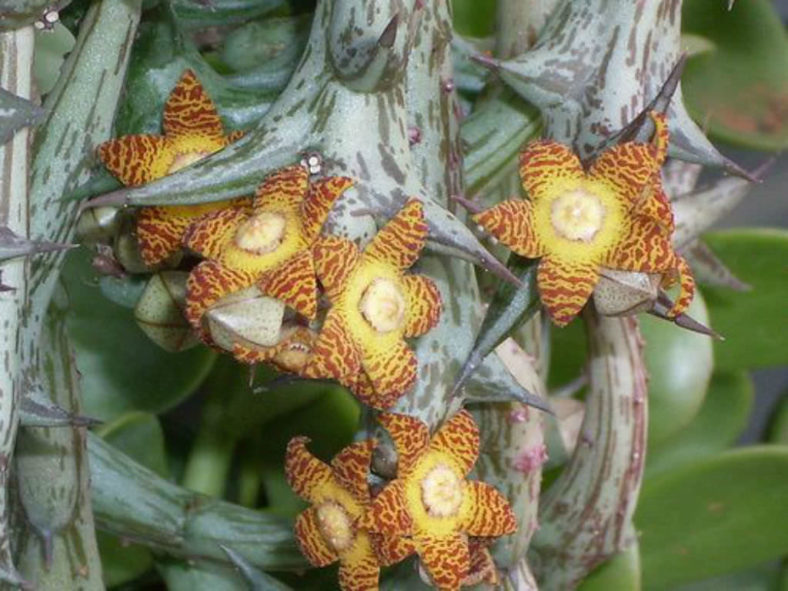Scientific Name
Orbea schweinfurthii (A.Berger) Bruyns
Synonym(s)
Angolluma schweinfurthii, Caralluma schweinfurthii, Ceropegia schweinfurthii, Pachycymbium schweinfurthii
Scientific Classification
Family: Apocynaceae
Subfamily: Asclepiadoideae
Tribe: Ceropegieae
Subtribe: Stapeliinae
Genus: Orbea
Etymology
The specific epithet "schweinfurthii" (pronounced shwain-FURTH-ee-eye) honors Georg August Schweinfurth (1836-1925), a Baltic German botanist and ethnologist who explored East Central Africa.
Origin
Orbea schweinfurthii is native to Botswana, Namibia, Zimbabwe, Zambia, Malawi, Congo, Tanzania, Rwanda, and Uganda.
Description
Orbea schweinfurthii is a mat-forming succulent with slender, branching stems with widely spaced tubercles ending in a conical tooth. The stems are prostrate to ascending, reaching a length of up to 6 inches (15 cm). The tubercles are spreading to slightly ascending, arranged more or less in four rows along the stem, and can measure up to 0.6 inches (1.5 cm) in length.
The flowers are star-shaped with a densely papillate, deep yellow corolla that has dark maroon spots inside and a pale yellow to cream corona speckled with purple. They can reach about 0.6 inches (1.5 cm) in diameter and appear in summer and fall.

Hardiness
USDA hardiness zones 10a to 11b: from 30 °F (−1.1 °C) to 50 °F (+10 °C).
How to Grow and Care
Several species are fairly easy to grow. Others, often those with slightly hairy stems and the more unusual flowers, are more challenging and require careful watering (with some fertilizer) during the growing season and complete water withdrawal during the winter months. A minimum winter temperature of 50°F (10°C) is acceptable, provided the plants are kept absolutely dry. A heated, growing bench or incubator can help delicate plants survive the colder months. However, many species live under shrubs in their habitat and prefer light shade rather than full sun.
A gritty compost is essential, and clay pots are advisable for the more delicate species. Some growers prefer mineral-only compost to minimize the chance of a fungal attack on the roots. A layer of grit on the compost's surface prevents moisture from accumulating around the base of the stems.
Keeping Stapelias and their roots free of pests, such as mealybugs, is key to success, as fungal attacks often result from damage to the stems caused by insects.
Learn more at How to Grow and Care for Stapelia.
Links
- Back to genus Orbea
- Succupedia: Browse succulents by Scientific Name, Common Name, Genus, Family, USDA Hardiness Zone, Origin, or cacti by Genus
Photo Gallery
Click on a photo to see a larger version.


